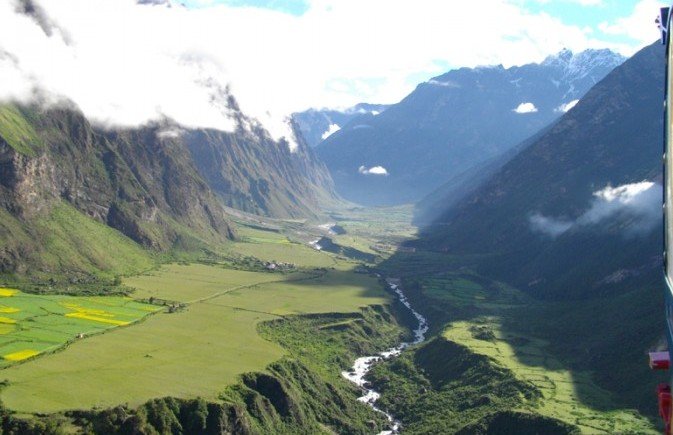tsum valley, Nepal – Tibet may be part of China, but the Tibetan culture continues undisturbed in a forgotten valley in Nepal. Nestled between the high mountains of the Himalayas, a people continue to live as they have for hundreds of years.

The Tsum Valley is a land that time seems to have forgotten. Even the name “Tsum” means “separated” in the Tibetan language. There are no roads that lead into the region. The only entrances are along the river (Khola) that cuts through the heart of the Tsum Valley. The Syar Khola bisects the valley, leaving the valley only through a narrow gorge.
Here the people practice Tibetan Buddhism as they have done for centuries. There are 14 Buddhist monasteries that dot the valley and the mountainsides. The devotion of the people to their ancient ways remains solid as they honor the Dalai Lama in this unique form of Buddhism.
Few visitors have penetrated this place, where there are no roads or electricity, much less internet. In fact, it was closed to outsiders until 2008. Even today, it has very few visitors. The area is difficult to reach, and can only be done on foot. While less than 200 kilometers from the capital city of Kathmandu, it might as well be another world. And, it really is.
Children with dirty faces play amongst the farm animals. The women work to make butter tea, a thick tea that is served hot in the homes. The men farm and enjoy whiskey, one of the few items from outside that comes regularly by donkey & Yak trains into the villages.
Large glaciers flank the northern perimeter while the white mountain peaks break the blueness of the autumn sky. Monks inhabit monasteries and caves that date back over 1000 years. The people here don’t kill animals. They will only eat the meat of what has died. As a result, the wild animals show no fear of man. Lemurs, yaks and other animals freely roam the region, easily mixing with the human population.
The region has its problems. Most of the children don’t go to school because of the poverty of the families. “When asked why they don’t send their children to school, the parents will tell you that they need the children at home to help with the farm, "Life is hard for these people.”
Life has always been hard for the Tibetan people, who have found a way to survive in a hostile environment. Farmland is scarce in this part of the world, but this valley has provided food since their arrival well before the 10th century A.D. It is a green valley surrounded by rock and mountain.
A journey into this region is better a minimum of 15 days of trekking. The area is now beginning to develop some tea shops for visitors. Most of the tea shops are in private homes, which provides food and lodging for trekkers. The arrival of visitors will benefit the area economically.
The presence of trekkers will not harm the Tibetan’s way of life. Very few trekkers will make the difficult journey overland into the region. But those who do will come away with an experience of a lifetime. They will step back in time to see the people of Tibet. “High mountain peaks, waterfalls, and the valley’s own eco-system will impress and amaze all visitors who dare to take this adventure “There’s no place quite like this in Nepal.” The area is open for most of the year, although the rainy season (June to early September) usually will discourage most people from making the trek. Still, each season offers a different glimpse into this forgotten valley.
The first Buddhist person came into Tsum valley was Guru Rimpoche (Milarepa), who meditated in the different caves, and which became as holy points as monasteries.
And mentioned the Nunnery Monasteries (Rachen Gunmpa, Mu Gumba, and Gumba Lungdung are the main monasteries.
“There are very few companies that will take trekkers into Tsum valley. We are one of them.”